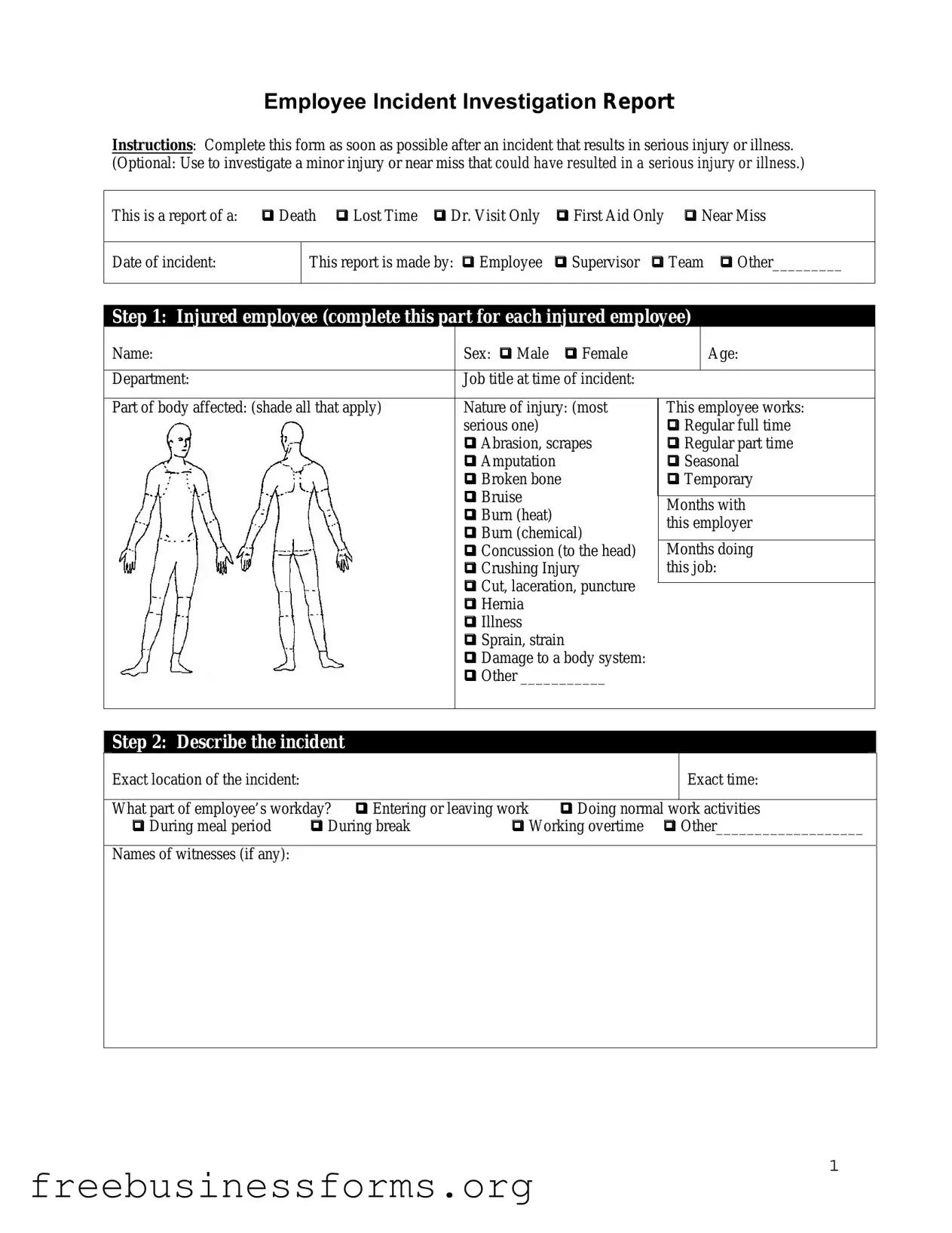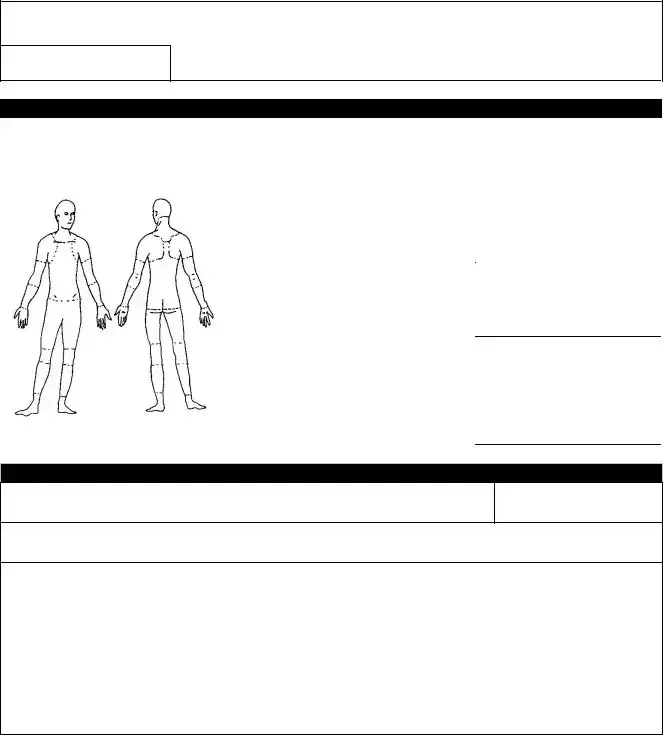When an employee is involved in an accident at work, a clear and concise process for documenting the incident is essential. The Employee Accident Report form serves as a vital tool in this process, capturing critical information that helps ensure workplace safety and compliance with regulations. This form typically includes sections for detailing the date, time, and location of the accident, as well as a description of what occurred. It also allows for the identification of any witnesses and the recording of injuries sustained. Importantly, the form often prompts for immediate actions taken following the incident, such as first aid administered or notifications made to supervisors. By providing a structured format for reporting accidents, the Employee Accident Report form not only aids in the investigation of the incident but also contributes to the overall improvement of workplace safety protocols. Ensuring that all employees are familiar with this form can foster a culture of safety and accountability within the organization.



